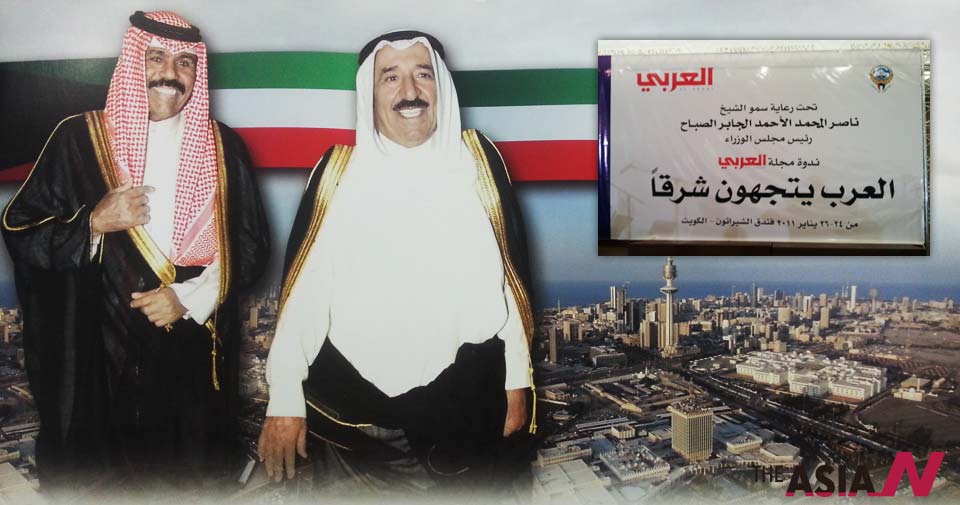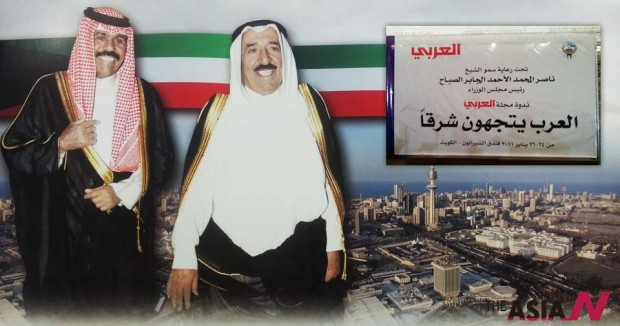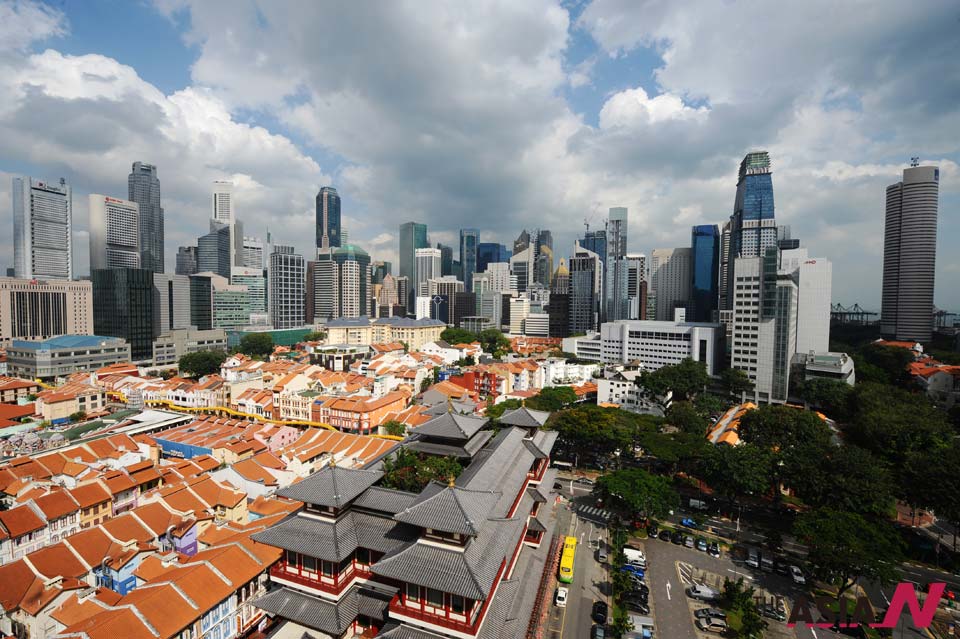
Asian Cooperation Dialogue aimed at bringing prosperity to Asian people, world peace
History is made by great events and major issues involving statesmen, scientists and thinkers who devoted themselves to the service of mankind. That was the first thought that flashed through my mind as I was looking at the leaders and representatives of the Asian countries participating in the First Asian Cooperation Dialogue Summit in response to a call to achieve a big dream of the unity of the countries of the world’s largest continent, a dream that comes out and disappears like a distant star, which in its first flash in the sky of Kuwait has decided to keep its brightness for an endless future for the benefit of the peoples of the yellow continent. Kuwait’s initiative to convene this conference is a highly significant message, “a historic event crowned with success,” as described by the Kuwaiti Information Minister.
I recollect what happened on 24 January 2011 when Al-Arabi organized its annual symposium entitled “The Arabs Heading East,” in an attempt to shed light on the old relations between the Arab world and Far Eastern and central Asian countries, such relations which were not just geographic, but their implications had an impact on all aspects of life of the Asian and Arab communities which were mutually affected, economically, culturally and ideologically, through land and sea journeys. The symposium was also designed to stress that it was time to turn to the great East, the East of both ancient and emerging civilizations and to highlight the history of Kuwait’s relations with that part of the world, which is an example to copy, as seen in the opening of over 300 trade offices in India by Kuwaiti merchants, thanks to their good relations with the Asian countries. It was from those offices that they moved to the rest of the Asian countries, where they founded Arab schools to teach Arabic and promote Islamic heritage.
The symposium coincided with Kuwait’s celebration of the fiftieth anniversary of its independence, which made its research sessions a golden opportunity to praise such historical, cultural and commercial relations with most Asian countries.
A historical interest
Moreover, Al-Arabi, the cultural newborn founded in 1958, has for over 54 years been keen in its features, journeys and explorations to introduce the Arabs and Arabic readers to the peoples and countries of the old continent of Asia and the historical role it played in human civilization.
It was that historical interest in the Asian continent that asserted the importance of such dialogue which combines all regions, particularly in view of the fact that Asia comprises a number of communities representing isolated islands, and the “Asian Cooperation Dialogue” has just been an attempt to bring together all such islands to advance common cultural, social and economic interests.
Looking at the signs of mutual interest between the Arabs and Asian continents shows that they are not limited to economic and commercial aspects alone. True, Asian products, particularly from the Far East – Japan, South Korea and China – fill the Arab markets, so does manpower from central Asia, but these countries have a similar interest in investigating the Arab East.
During the past two decades the number of Japanese cultural institutions interested in Arabism has been on the rise; by the end of World War II, the number of Japanese experts on the Middle East were counted on the fingers of one hand, and the number was estimated at over seven hundred three years ago, whose research covers the issues of religion, nationalities, history and philosophy and even the minutest details of life in the city, countryside and desert.
The same is true of China, where Arabic is taught in tens of its universities. The Arab East’s interest in the languages, cultures and communities of the Asian continent does not compare with theirs; they are serious to identify us. I wish we were equally serious in order to maintain real, effective communication and have a future of general prosperity and comprehensive peace.
A promising market
To begin with, the economic dimension of the promising Asian market is supported by figures about the continent whose countries account for 60 percent of the population of the world, with a growth rate of 4.5 percent for the Asian countries combined, the world’s highest, and China, whose annual growth rate is 7-8 percent, and Japan and India having near rates.
Indonesia, one of the centres of growth in Asia, with a national income of about a trillion dollars last year and a growth rate of 6.5 percent, is today among the world’s leading investment countries, as its population accounts for 78 percent of the labour force. Mongolia, situated between China and Russia, is one of the world’s eleventh biggest economies in terms of growth, with an economic growth rate of 7.1 percent in 2011.
In addition, Asia possesses huge quantities of gold exceeding those held by its rivals in Europe and America, and its hard currency reserves prevented its rivals from undermining its growth and progress. Furthermore, Asia has the largest natural gas reserves with promising future capabilities in the energy sector.
The Asian East bloc has become the focus of world balance. As last century witnessed the rise of economic tigers, many of the studies and views presented in the meetings held on the fringes of the summit suggested expectations of continued economic progress in China this century. This is supported by the rise of new regional institutions in China and the building of new international transport lines, mainly the rail Silk Road, the Eurasian line which crosses the historical Silk Road countries in Asia.
Integration is the solution
The participating countries were: Afghanistan, Bahrain, Bangladesh, Bhutan, Brunei Darussalam, Cambodia, China, India, Indonesia, Iran, Japan, Kazakhstan, Korea, Kyrgyzstan, Laos, Malaysia, Mongolia, Mynmar, Oman, Pakistan, Philippines, Qatar, Russia, Saudi Arabia, Singapore, Sri Lanka, Tajikistan, Thailand, Untied Arab Emirates, Uzbekistan, Vietnam, in addition to Kuwait, the host country. The presence of these Asian delegations, no doubt, presented many views which will shape the promising future.
Common interests in the vital issues concerning the future of the Asian peoples led the Tajik President Imomali Rakhmon to propose in his speech to the summit that 2013 be an international year of cooperation in the area of water during which all issues concerning water needs worldwide, particularly drinking water, be addressed, in addition to focusing on the use of renewable energy, issues of equal importance to the Arab world.
Oil is the most important commodity today as development and progress depend on the energy it provides, since scientific and economic renewable energy projects are still in their infancy. Oil and energy strategists agree on the importance of Asian cooperation to achieve stability in the oil markets and set a fair price which guarantees the interests of producing and consuming countries alike, particularly in view of the fact that Asia possesses the largest reserves of fossil fuel–oil, gas and coal.
Demand for oil in the Asian countries amounts to 30-35 million barrels daily, i.e. a third of the world’s consumption, over nine million barrels of which is produced by Asia (excluding Gulf Cooperation Council (GCC) countries). This stresses the importance of cooperation in this area, particularly as investment in oil between GCC and Asian oil consuming countries dates back to its early discovery, and Asia is the biggest consumer of Kuwaiti oil.
GCC countries, Iraq and Iran produce about 22 million barrels daily, 1m of which is exported and the rest is for local consumption. In addition, Qatar, Iran and Saudi Arabia provide the Asian countries with natural gas according to spot agreements to ensure continuous supply at subsidised prices to promote Asia’s growth and joint cooperation. This means that integration is the best solution as far as these countries are concerned.
Of Kuwait’s total investments in the world, 9 percent is allotted to the Asian markets, but the future of Kuwait’s projects in upgrading the infrastructure north of the Arabian Gulf and building the Silk City will no doubt raise this amount, as Kuwait is strategically located at crossroads, in addition to being a leading Kuwaiti and Gulf oil market.
Another type of cooperation is needed, namely academic cooperation. Advanced Asian universities in Japan, China, Korea and India can be the cornerstone of research projects and applied studies of the continent. I therefore hope that the countries’ ambitions include the promotion of science within and outside educational institutions and research centres to enhance human development. Of special importance is the exchange of scholars between Arab and advanced Asian universities, particularly those with advanced research projects. Moreover, achieving labour market stability may stimulate Asia’s development.
Many problems involving the following issues still remain: the environment and climate, pollution control, cooperation in the services sector, development of small and medium-sized enterprises, fostering the legal and institutional frameworks and regulations which encourage investment in the Asian countries, prevention of double taxation, liberalization of trade, boosting development and investment funds, road safety standards, enhancing the abilities to deal with natural and industrial disasters which often threaten the continent’s geography and inhabitants.
This raises the hope that the forthcoming Asian Cooperation Dialogue summits agreed to be held in Thailand (2015) and Iran (2018) will move the Kuwait summit’s ambitions further ahead for the prosperity of the Asian peoples, world peace and finding solutions to major problems and challenges.
The constitution of the future
The summit was not confined to ideas but involved practice as well. In his closing speech HH the Amir of Kuwait underlined the importance of cooperation in the field of development and the objectives of Asian cooperation dialogue, including measures to combat poverty and raise the standard of living of the peoples of Asia.
To that end, HH the Amir introduced an initiative demonstrating the ambition of Asian cooperation in which he called for mobilizing financial resources in a $2bn programme designed to finance development projects in non-Arab Asian countries to help fulfil the objectives of the third millennium, and announced Kuwait’s $ 30m contribution to the programme.
This initiative reflects Kuwait’s keen interest in financing Asian projects through the Kuwait Fund for Economic Development in cooperation with governments. Since the fund was established, the volume of its donations and development aid has amounted to $5.5bn divided into about 170 projects covering the sectors of agriculture, transport, communications, industry, water, wastewater, health and education in more than twenty countries.
Within half a century since it was established the Kuwait Fund has been Kuwait’s development ambassador through Arab countries economic support projects since the mid-1970s, when it expanded the scope of its work in 1974 to include Asian developing countries’ as well. We can inspire a constitution for the future from the speech of the Amir of Kuwait:
“Our continent has suffered from devastating wars which have damaged our economies, killed many of our children and hindered development in our countries and in which we have been the biggest loser as they have only brought about ruin, damage and backwardness. From this forum we call for the promotion of the voice of reason and dialogue and prevention of destruction and damage to countries through observing our conventions and treaties and resolving our disagreements peacefully and non-intervention in internal affairs. In this way we present an excellent model of handling and overcoming crises to secure the safety of our countries, progress of our societies and property of our economies… Our continent is characterized by cultural, civilization and religious diversity, an indication of its long history and integration. Despite their ethnic and religious differences, the peoples of our Asian continent have been accustomed to peaceful coexistence, stressing the principles of intimacy and solidarity rather than ignorance and fighting. These are principles that must be underlined and applied, as we will be on the wrong track if we ignore or exclude others, and commitment to the principles of human rights, the basic pivot for a free, decent life with the rights and freedoms it entails, will provide stability for our countries and tranquillity for our peoples.”
More than three thousand members of official delegations and media figures participants in the historic event – the First Asian Cooperation Dialogue Summit (15-1 October 2012) – have no doubt gone back home carrying fresh ideas for the future, representing a constitution drawn up in Kuwait, underscoring the importance which goes beyond regional boundaries and the Arab world’s sky and reaches the world of humanity at large.
In its May 1969 issue, the National Geographic magazine described Kuwait as “the Middle East’s Aladdin’s lamp”. That was not a linguistic exaggeration by the writer, but is read in the context of the huge projects which Kuwait has planned for home and overseas prosperity. But for the crises and wars the region had witnessed the lamp would have played its planned role. However, we look forward to the future in the hope that it will be a real, rather than a magic, lamp which lights our road by powerful hands, brilliant minds and a strong will to rediscover Asia’s treasures according to the constitution of the future.








One thought on “Asian Cooperation Dialogue aimed at bringing prosperity to Asian people, world peace”